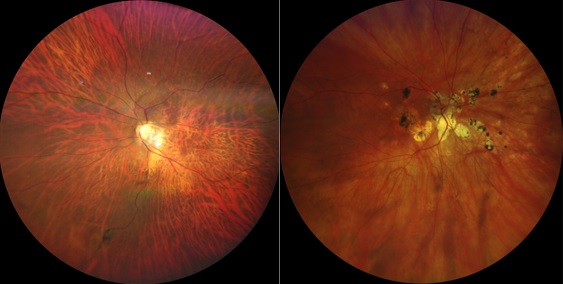MYOPIA
What Causes Myopia?
Myopia, commonly referred to as near-sightedness, is an eye condition where the length of the eyeball is too long for its optical power. There are many factors that contribute to myopia. Genetics and the environment both play a role. If you have parents who are myopic, then the chance of you having myopia is higher. Spending more hours on close-up tasks and less time outdoors also increases the risk of developing myopia and its associated myopia retinal complications.
Why is Myopia a Global Eye Problem?
In many countries, the prevalence of myopia is reaching 80-90%. According to the World Health Organization, 50% of the population worldwide will be myopic by 2050, leading to increased cases of myopia retinal complications.
What are the Sight-Threatening Complications?
While we can now effectively control myopia with the use of low dose atropine, bifocal/progressive lenses, and orthokeratology, it is the complications associated with myopia that are more complex to treat. If you are myopic, the risk of developing conditions such as cataracts, glaucoma, and retinal detachment is greater. Other retinal conditions associated with myopia include myopic retinoschisis, myopic macular degeneration, peripheral retinal tears, myopic choroidal neovascularization, dome-shaped macula, punctate inner choroidopathy, and myopic macular hole. These are all examples of myopia retinal complications.
How to Best Monitor Retinal Complications?
At City Eye Centre, our expertise is to monitor and manage the potential sight-threatening complications of myopia. We are fully equipped with ultra-wide field fundus photography, high-resolution optical coherence tomography, and angiography to detect early changes and provide timely treatment for myopia retinal complications.


Do you have questions or concerns about your eye health or a specific eye condition? To discuss, please contact City Eye Centre for more information.
